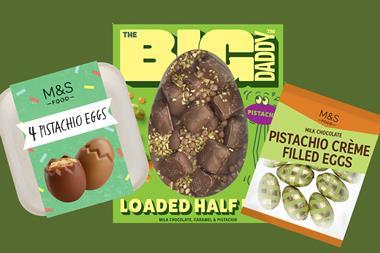There’s nothing like some Seoul food – and thankfully, Londoners have another source of the spicy stuff opening in June. Korean retailer Oseyo has sealed the deal on a new store in London Bridge, its ninth London branch and 12th in the UK since 2015.
The smaller, glitzier sister of the beloved New York City-founded H Mart, Oseyo is one of two big Korean markets in the UK. Its most recent, 4,000 sq ft addition will see historical railway arches kitted out with a premium soju and sake display, a cosmetics wall (all hail the magical properties of snail cream) and reams of K-pop paraphernalia, according to a recent report. Of course, there will also be heaps of Korean daikon and spring onions, shelves groaning with dozens of varieties of kimchi, and more flavours of ramen than a university student could eat in three years.
But Oseyo’s prime Borough Market location tells a much bigger story. Over the past decade, Korean food has been working its way into British hearts. Gangnam Style kickstarted a UK love affair with Korean cuisine, which was solidified later by K-pop fandom and series such as Squid Game.
As ever, supermarkets had their fingers on the UK food trend pulse, with Ocado bolstering its Korean range by 50 new products last October. And then in February, Korean food brand Sun Hee unveiled 20 new SKUs were rolling into Tesco, including its quartet of udon noodle bowls: Spicy Kung Pau, Gochujang, Sesame Teriyaki and Sweet & Sour.
British supermarkets don’t do Korean well
Yet, are the big UK retailers getting it right and stocking genuine brands found in the likes of Oseyo, or are they just ticking a trend box?
A quick search of Ocado reveals about half of its 39 “Korean” products aren’t particularly Korean. Among actual Korean fare, we’ve got Bibigo steamed dumplings, AJR sauces, a tub of gochujang paste…it’s all good stuff. But the rest could be considered a bit bland, like Korean-style beef noodles and bibimbap meal kits. Meanwhile, products from Itsu, the British-Asian fast food chain that calls itself a “Japanese and sushi restaurant”, feature prominently (interestingly, the Itsu dumplings list Korea as country of origin).
Then there’s Tesco. Its 23 products also include Itsu tempura prawns (Korean street food does delight in deep-fried things, but they’re called twigim), Wagamama “Korean style” BBQ sauce, Ben’s Original Korean BBQ Rice and Tesco finest “Korean inspired” BBQ pork crisps. Other British supermarkets list similar choices.
Arguably, there is always a need for entry-level offerings, especially with Korean food, which can be challenging for some consumers. But the UK mults could (and should) do a far, far better job of reflecting a rich and diverse cuisine as authentically as possible.
Let’s return to Oseyo. A quick scroll of its site yields bulgogi flavoured rice balls, citron tea, almond giant choco sticks, instant noodles in black bean sauce and gochugaru (fine red pepper powder), to name a few.
What Korean food do UK shops offer?
And variety isn’t the only point here. There are of course frozen dumplings, but the items listed aren’t just ready meals. The store’s homepage features saliva-inducing recipes like Korean Chili Pepper Poppers and Korean Spicy Braised Tofu, each with pics and links to products to make them. This is about arousing excitement, creating an occasion around eating – it’s the stuff brand consultants talk about and a lesson the mults could surely take on board.
As Michelle Zauner writes in her memoir Crying in H Mart (sadly much more about inner turmoil than the eponymous supermarket), Korean supermarkets are so much more than stores. They are a destination for adventurous eaters, a mecca for families on their weekly pilgrimage, a home for immigrants – not just Korean ones – in a new country.
“It’s the only place where you can find a giant vat of peeled garlic, because it’s the only place that understands how much garlic you’ll need for the kind of food your people eat. H Mart is freedom from the single-aisle ‘ethnic’ section in regular grocery stores,” she writes. “It’s a beautiful, holy place…H Mart is where your people gather under one odorous roof, full of faith that they’ll find something they can’t find anywhere else.”
Can the mults ever fully replicate this religious feeling? Probably no, and they don’t have to. But there’s opportunity in reflecting it even a little. After all, it’s places like these that are increasingly drawing in British consumers.




















No comments yet